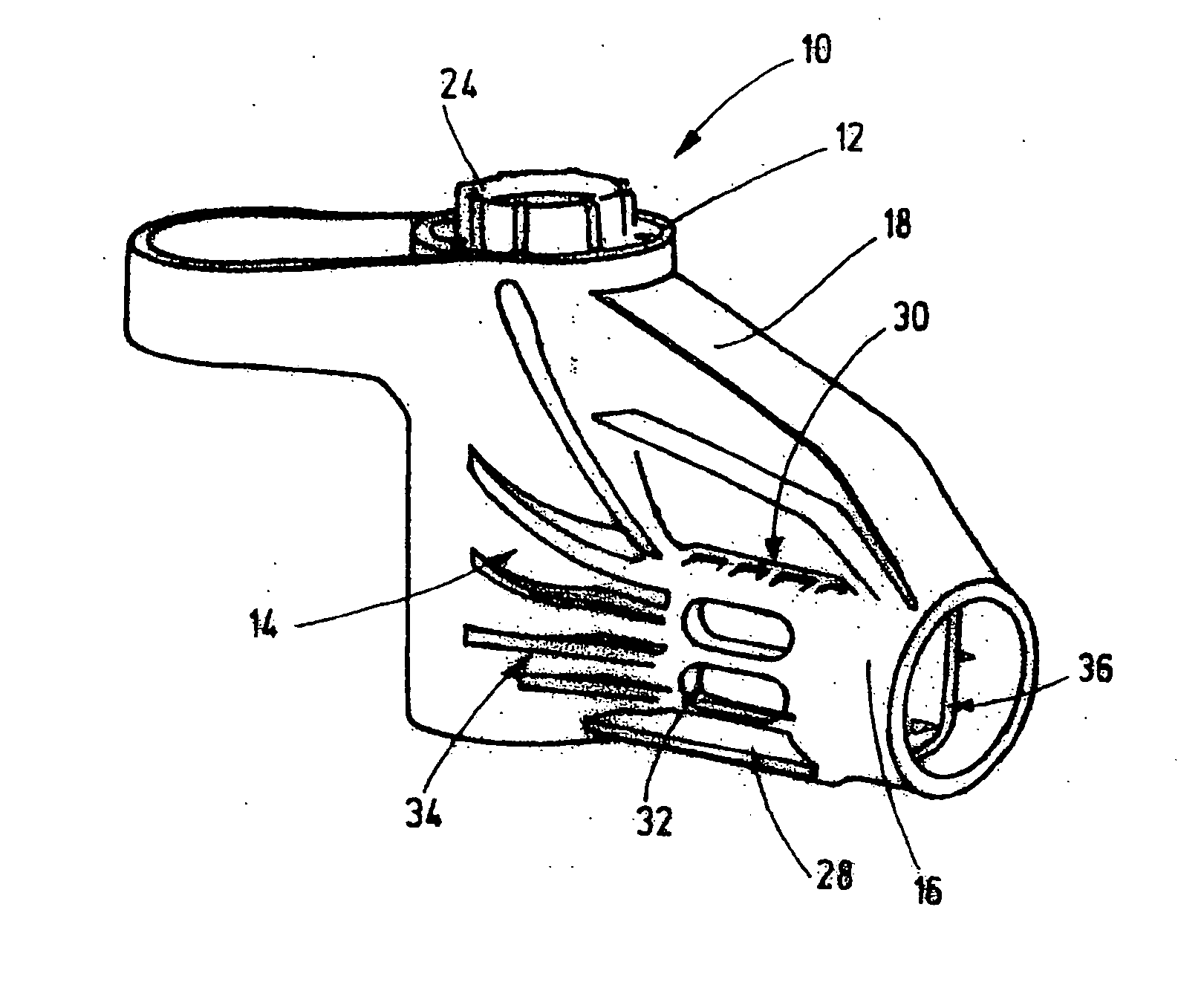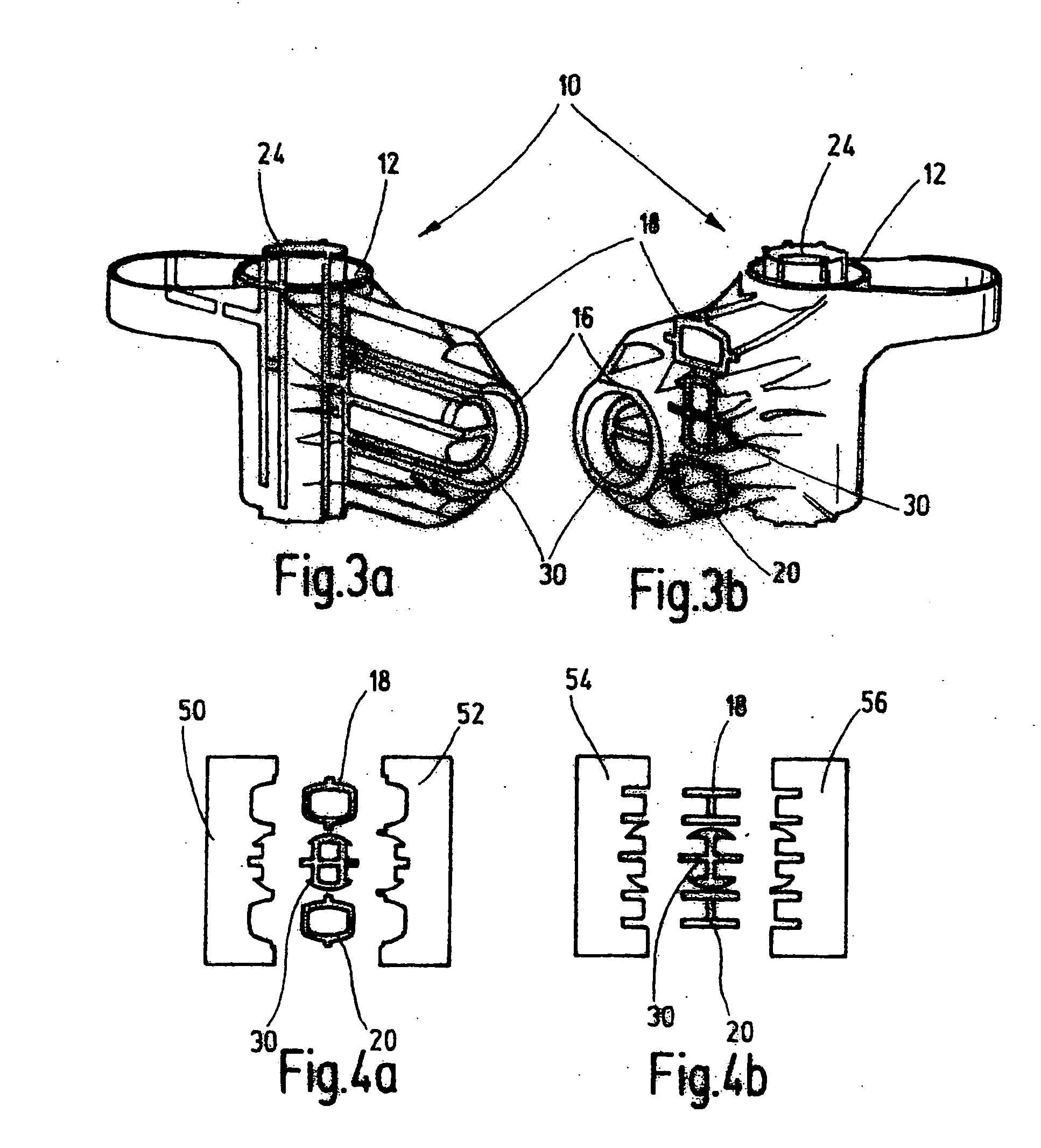Wiper bearing
a bearing and wrist technology, applied in the direction of bearing unit rigid support, vehicle maintenance, vehicle cleaning, etc., can solve the problem of especially compact construction, and achieve the effect of simple tool structure, good positive engagement, and simple tool structur
- Summary
- Abstract
- Description
- Claims
- Application Information
AI Technical Summary
Benefits of technology
Problems solved by technology
Method used
Image
Examples
Embodiment Construction
[0029] The invention is particularly suitable for wiper bearings made of plastic. In general, the same reference numbers are used in the figures for the same parts.
[0030]FIG. 1 shows a wiper bearing 10 for a windshield wiper system with a bearing housing 12 and a journal 30 arranged on a bearing area 14 on a bearing housing 12 and a short annular element 16. The bearing housing 12 formed by an outer tube concentrically surrounds an inner tube 24. The short annular element 16 is arranged coaxially outside the journal 30 in the area of its front side 36. The journal 30 and the annular element 16 are arranged off-center with respect to an axial extension of the bearing housing 12.
[0031] The annular element 16 is fastened on the bearing housing 12 with an upper brace 18 and a lower brace 20, through which the journal 30 is accessible from the outside at least in a connecting area 32. A tubular plate (not shown) will subsequently be connected to the journal 30 in this connecting area 3...
PUM
 Login to View More
Login to View More Abstract
Description
Claims
Application Information
 Login to View More
Login to View More - R&D
- Intellectual Property
- Life Sciences
- Materials
- Tech Scout
- Unparalleled Data Quality
- Higher Quality Content
- 60% Fewer Hallucinations
Browse by: Latest US Patents, China's latest patents, Technical Efficacy Thesaurus, Application Domain, Technology Topic, Popular Technical Reports.
© 2025 PatSnap. All rights reserved.Legal|Privacy policy|Modern Slavery Act Transparency Statement|Sitemap|About US| Contact US: help@patsnap.com



